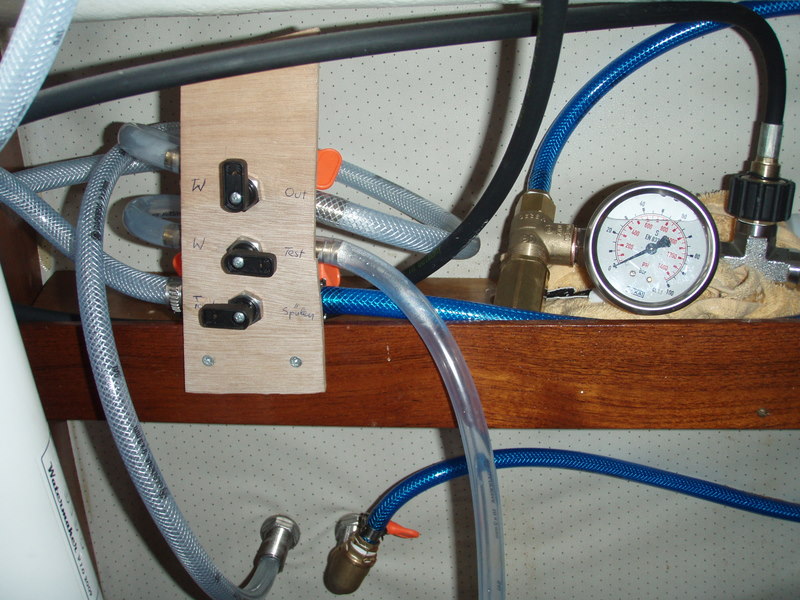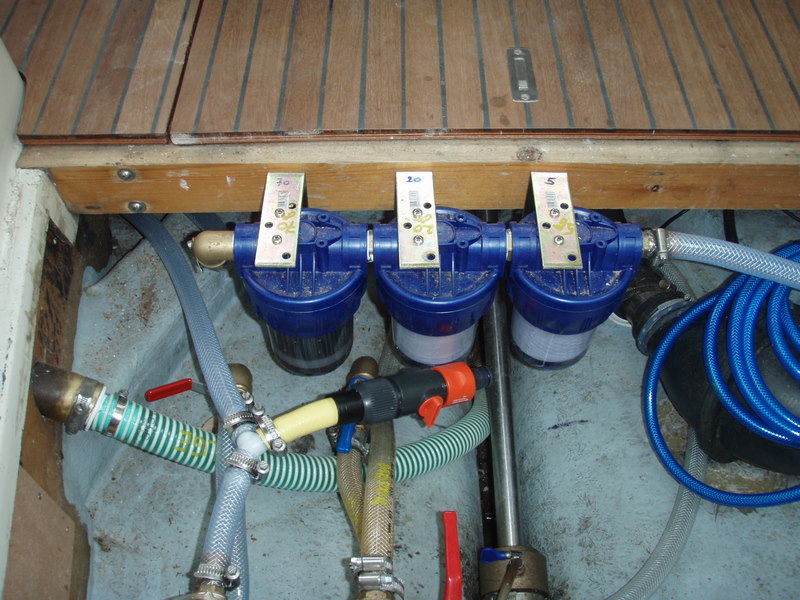The actual costs
Learning is expensive. I bought material that turned out not to be necessary or adequate. So, I had to buy twice in some cases. I found some parts that were cheaper after I had paid for the others. But without taking all this into consideration, the costs for Dido’s watermaker were 1,300 EUR / 1,500 USD.
What is not included but necessary? Well, power supply. In our case, we had to buy a DC-AC inverter of adequate size, which cost about 400 EUR / 500 USD. This is a must but also a nice-to-have for other things on board. Most boats will already have one, but maybe not one that is powerful enough for the watermaker.
For safety reasons, we also built in a stronger alternator for 250 USD and a Sterling A2B charger for about 350 USD.
Flushing, Pickling, Maintenance
Since I first talked about our watermaker I was surprisingly often asked about the maintenance procedures, more than about costs or technical issues. Although these things are very well documented in the membrane manuals let me spend a few words on it.
Basically, the membrane is self-cleaning to a very high degree. When you use it every day it needs only little care. So, what do you really have to do then and what do need therefore? Practically maintenance means three possible actions: 1) simply flushing with fresh water if you are going to shut down the watermaker for more than 24 hours in order to reduce the chance of bio-fouling. 2) Sanitizing / disinfecting if you are going to shut it down for more than 48 hours. Each action takes about 10 minutes. 3) Thoroughly cleaning the membrane (without de-mounting but with flushing with chemicals) in case that the performance (fresh water production) goes down significantly.
 How to flush with fresh water and how to disinfect?
How to flush with fresh water and how to disinfect?
You need a bucket, a bowl or alike of about 2 gall. The installation has 3 3-way-valves with hoses on each valve outlet for flushing, sanitizing, and cleaning. These three hoses are: Feed water inlet (instead of seawater you take water from the bucket), fresh water outlet (instead of pumping the product water into the tank you pump it into the bucket), brine outlet (instead of pumping the brine overboard you pump it into the bucket).
Flushing
For flushing you fill the bucket with fresh water, put the three hoses into the bucket, close the seacock so that no more salt water comes in, and you pump half of the fresh water from the bucket through the watermaker and overboard. So, all seawater from the strainer, filters, pump, hoses, and the vessel should have gone overboard and the installation should be now filled with fresh water. Then you turn the 3-way-valves into the right position and simply circulate the remaining fresh water from the bucket through the complete apparatus for a couple of minutes. End of the story.
Disinfection / Sanitizing
This is absolutely the same procedure as flushing; however, you add a disinfectant to the water in the bucket. The appropriate disinfectants you will find in the documentation.
Cleaning
My experience is: many people feel stress when they hear terms like “alkaline, muriatic, acidic, hydroxide” etc. But believe me: It is like removing scale from your electric kettle. You put something into the water and give the whole thing some time. Then you rinse with water. Right? It is really that eas also with the watermaker.

In order to get rid of the clogging substances you do the very same procedure as described in “Flushing”, and you add chemicals to the water: 1) you add a very alkaline substance, like caustic soda = sodium hydroxide. You circulate it for a while. Then you flush the installation with fresh water and 2) you add a very acidic substance, like muriatic acid or citric acid and circulate it for a while. Finally, you flush it again with fresh water.
Reportedly one would clean the membrane once a year before winterizing everything although it probably might not be really necessary.


